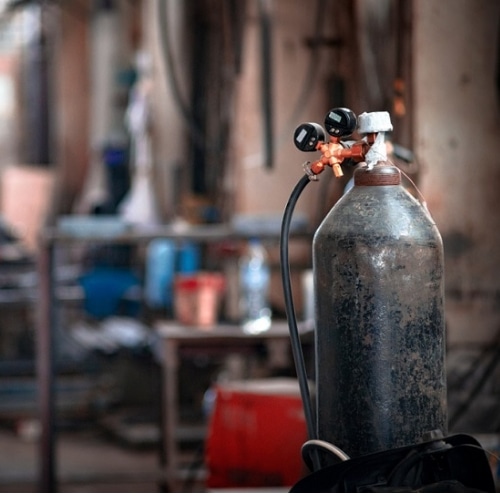Whether it’s a TIG, Stick, MIG or any other type of welding, safety should be your first concern. Welders should secure themselves from the heat, arc, gas and light. Although metal inert gas welding is different from other methods, it still needs to take proper safety measures.
This article covered the mig welding safety checklist and rules to avoid any damage. The safety precautions are not limited to any specific individual or company. Everything from metal cleaning to the final weld result is discussed below.
Contents
Safety Precautions
Spatter & Arc Rays
Take arc rays and spatter seriously because they can damage skin and harm the eyes. To avoid dangerous arc rays, use the best welding helmet for it. These electric arcs produce ultraviolet and infrared rays, so precautions are essential.
Electric Shockwave
You’re all well aware of it. Many welders, especially newcomers, inadvertently touch active electrical parts. Before performing any type of internal repair, it is best to unhook the equipment from the outlet. The common reasons for electric shocks are:
- No insulation between welded metal and ground.
- Touching the metal parts of the electrode and holder with wet skin.
Fumes and Gases
Having a proper ventilation system is the best way to get rid of fumes and gases. The dirty metals, galvanized coatings on workpieces, and paint on metal often produce dangerous fumes and gases. A ventilation system becomes more necessary when you use pure carbon dioxide as a shielding gas. The toxic gases and fumes can cause asthma and lung infection.
You’ve to be extra careful when working on these metals as they produce toxic vapors:
- Beryllium
- Zinc
- Copper
- Lead
- Cadmium
Wire Feed System
It can only damage fingers while adjusting the roller. If necessary, use any tool or wrench to set the wire rollers.
Protective Gears for MIG Welding
The gears mentioned below are considered perfect for the mig welding process.
- Welding Helmet: Its usage depends upon the number of amperes you use. Number 6 lens is suggested up to 30 amperes and 14 number is recommended, when using more than 400 amperes.
As a rule of thumb says, if you see the arc after welding, change your lens number or use a dark lens shade.
- Use welding boots in order to save your feet and toes.
- You may use welding safety glasses to protect your eyes from the flash.
- Welding gloves should be used to protect your skin and arms.
- Wear complete clothes and your shirt shouldn’t be sleeveless.
- Long hairs and neck should be covered properly.
MIG Welding Safety Checklist
Proper Pre-Operation
It’s the first step, and everyone should do it, whether they’re experts or novices. First of all, check the clean surface area and remove irrelevant stuff such as any flammable liquid. To avoid shortcircuits and leaks, double-check the electrical connection and gas lines.
Cleaning
Metal cleaning is another important step to get your work done smoothly. Remove impurities from the metal by brushing or grinding.
Welding Environment
Most welding operations are performed indoors, so a safe welding space should be mandatory. To execute a proper weld, the workspace should have adequate lighting. The room should be composed of concrete and blocks to ensure that it does not catch fire.
Electrical System
How many 110V machines do you intend to run at the workstation? With the accurate number, electrical wiring should be done with 20-ampere circuit breakers. Similarly, the ventilation system must be precise in order to exhaust fumes and gases.
Equipment Checking
Before starting, all mig welding equipment should be checked properly such as mig gun, nozzles, electrical wires, ground clamp, etc. Further, the nozzle should be free of spatter to perform better. Remove spatter through any tool such as pliers or anti-spatter.
Gas Cylinders
Always use certified and tested cylinders. Use the correct gas regulators or flow meters. Keep away the cylinders from any hazards like fire and grease.
After Welding
Close the gas cylinder valve and turn off the machine. Pack all of your stuff and store them in the storage room. Do not fold wires in an inappropriate way.
Frequently Asked Questions
Q1. How can we keep ourselves safe from welding fumes and gases?
First, properly clean the metal and remove impurities. The room or welding area should be well ventilated to quickly get rid of gases.
Q2. Can we rely on welding masks that are provided with the best mig welders?
We’ve noticed that these low-quality masks don’t work according to expectations, so it’s better to use professional welding helmets.
Q3. What gases are used in MIG welding?
There are many gases and mixtures used in mig welding and the most common gas is argon and carbon dioxide and their mixture of 75:25. Give a read to best gas for mig welding for more information.
Last Words
Damage and hazards are always with any welding procedure and we can only take mig welding safety measures to avoid any injury. These rules are for both professionals and noobies. Check more about what is mig welding?
- How to Use a TIG Welder? Ultimate Guide and Expert Tips - March 14, 2023
- What is a TIG Welder? – Everything You Need to Know - March 11, 2023
- Ahp AlphaTIG 200X(updated 203XI) Review for 2023 - February 7, 2023





